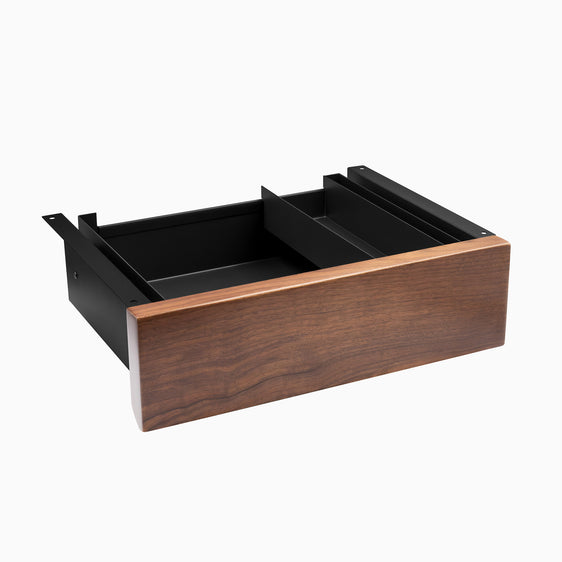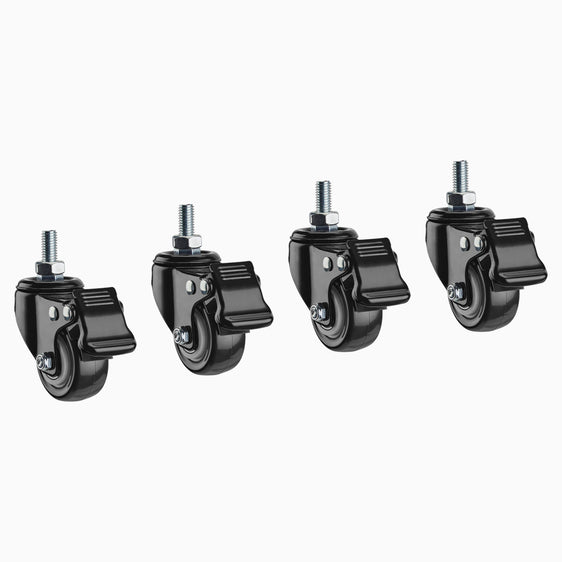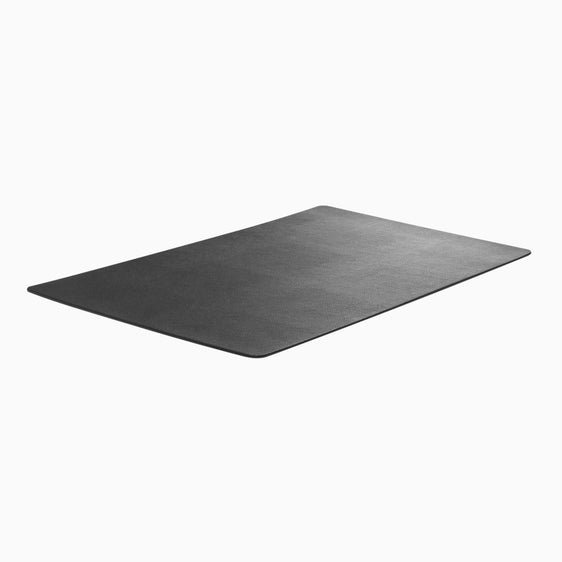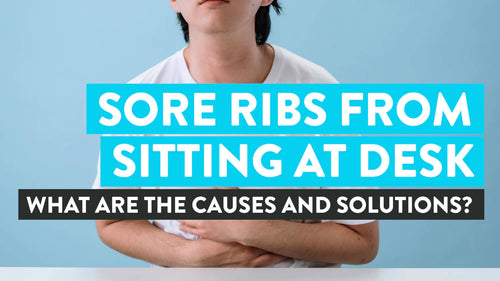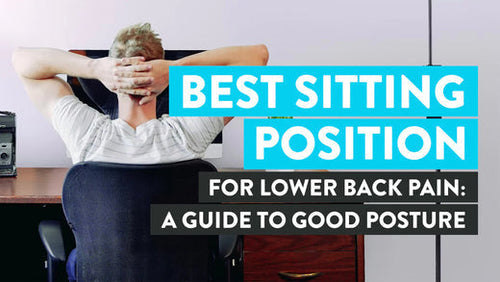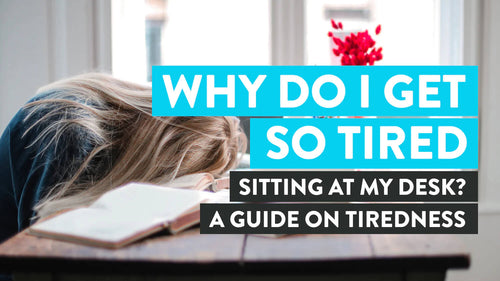
News
Expert Ways To Reduce Work-Related Chronic Pain
Hayden AdamsDo you ever come home from work feeling so tense that it seems impossible to relax? You're not alone. Chronic pain is not only a costly issue for individuals, but also for society as a whole, according to the Canadian Pain Society. It results in billions of dollars in healthcare expenses, lost productivity, and significant social costs due to addiction or depression, derailing many lives.
The government of Canada has reported that nearly 8 million Canadians experience chronic pain, with approximately one in five Canadians estimated to suffer from it, according to various large-scale surveys.
Chronic pain comes in many forms and can have many causes, whether it's long term serious illness, a short-term injury, or just everyday niggles as you get older (think about the onset of rheumatism or little back twinges when you pick up shopping bags).
However, issues can also arise at work, especially if your job is largely office-based and desk-bound. Here, we’re going to take a look at the causes of work-related chronic pain and get the lowdown from experts on a few of the best ways to manage it.
What Causes Pain at Work?

Apart from nosy colleagues and the gossipers around the water cooler? Well, these office nuisances might be one thing that causes you agony when you’re trying to get your daily tasks completed - but to be serious for a moment, there are some other reasons you might experience chronic pain in your office job. These include:
- Poor posture when sitting at your desk
- Standing for long periods
- Sitting in the same position for extended time frames
- Not moving around enough during the course of the day
- Repetitive strain injuries from using keyboards/typing and mousepad
- Not using a standing desk to help break up sedentary periods
Often, simply being aware of the fact you’ve not moved for a while and altering your position, or standing up and walking around to give your legs and back a stretch can help alleviate tension and minor pain.
However, if these issues have been going unchecked for a longer period of time and you’ve not been doing anything to help yourself, chronic pain which needs treatment from a professional may be required.
There are lots of different methods for tackling chronic work-related pain. Sometimes just some simple over-the-counter pain relief for a day or two can help. Heat patches applied to tense areas can also benefit, but sometimes you might need to hit the pain harder with professional treatments.
Here, we’ll consider what chiropractors can offer, the benefits of yoga and relaxation techniques, and finally remedial massage. Let's hear what the experts have to say.
What Can Chiropractors Offer in Terms of Relief for Chronic Work-related Pain?
“The first aim of chiropractic care would be to provide reassurance to the patient that nothing serious is causing the pain and that it would be expected to resolve within a few weeks. This would be followed by attempts to provide pain relief."
During the first visit, manual therapy may not be appropriate if the pain is too severe. Gradually increasing amounts of activity is an important means of ensuring recovery from low back pain.
Forms of pain relief that a chiropractor might recommend in the early stage of this severe pain may include over-the-counter medication, and heat or cold treatment combined with gentle exercises suitable for the patient’s level of pain tolerance. Self-management advice about activities of daily living, such as sitting, standing, lifting, and sleeping positions would also be provided.
The patient would be asked to return for another consultation, usually within a few days, for reassessment and follow-up treatment. Working with the patient, the chiropractor would set expectations of recovery, including a time frame for likely discharge from treatment, and identify the goals of the treatment program, focusing on returning to normal function. Simon French, Peter Werth, and Bruce Walker - The Royal Australian College of General Practitioners
Can You Heal from Chronic Pain Through Relaxation?

“The best way to unlearn chronic stress and pain responses is to give the mind and body healthier responses to practice."
By helping you transform chronic pain-and-stress responses into “chronic healing” responses of mind and body, yoga helps reduce your suffering from chronic pain. Your mind and body have built-in healing responses that are just as powerful as their protective pain-and-stress responses.
Whether it’s a meditation on gratitude, a relaxation pose that puts the body and mind at ease, or a breathing exercise that strengthens the flow of energy in your body—they all share the benefit of bringing you back home to your natural sense of well-being.
Relaxation specifically has been shown to be healing for chronic pain. It turns off the stress response and directs the body’s energy to growth, repair, immune function, digestion, and other self-nurturing processes. The relaxation response unravels the mind-body samskaras that contribute to pain and provides the foundation for healing habits. Consistent relaxation practice teaches the mind and body how to rest in a sense of safety rather than a chronic emergency” Kelly McGonigal - Yoga International
Could Remedial Massage at Work Help?
“Chair massages are commonly provided by companies for their employees. They are commonly shorter in duration, and for convenience, employees remain clothed and sit on a specially designed chair."
Because of this, the therapist is commonly restricted to working on the neck, shoulders, and upper back.
Working through a thin layer of clothing rather than lubricated skin therapists tend to use more pressure techniques plus friction techniques where the therapist rubs across the muscle fibers.” Dr Graeme Blennerhassett - Dr Graeme.com
Wrist, Knee, and Back Supports
There are lots of different kinds of supportive aids and garments that you can buy, that can help keep you relaxed, yet supported at work if you’re dealing with chronic pain.
Wrist supports: these can be used to help with issues caused by repetitive strain from typing or using a mouse regularly. They provide comfort and support to make sure your wrists and fingers stay in the right position and are kept warm and comfortable.
Knee supports: standing in one position for a long time without moving can cause pain and discomfort, so using knee supports can help with this particular issue, again by keeping your knee supported and correctly aligned it’ll help with discomfort and pain
Back supports: back supports that fit onto your office chair can offer great support to keep you sitting comfortably and in the right alignment if you have to sit in one position for a long time.
How can a team work out benefit chronic pain conditions?
“As a fitness studio one of the most prominent benefits we see when people workout together is the support system and social interaction. Working out on your own can be tough and sometimes it's hard to find motivation to workout alone. We see many people who come together in pairs or book group workouts because you get the support, motivation, and accountability you wouldn't otherwise have by going to an open gym. Having that support system to build up consistency is key in helping with chronic pain, frequent stretching and exercise have healthy benefits and can improve one's pain management.
In addition team workouts are led by an expert instructor. At Wheel House our instructors are trained to observe and analyze the participants and provide modifications, adjustments, and support for those who may have physical issues whether it be pain or a previous injury” Isabella Potencion Marketing Manager, Wheelhouse
What benefits can physiatric approaches bring to chronic work-related pain?
“More than 1/3 of Americans report a work-related health problem, with back pain being the most common issue. Back pain can occur as a result of work that is very physical, such as construction, or passive, such as working at a computer."
While chronic lower back or neck pain is unpleasant, the good news is that most pain can be relieved or completely eliminated without surgery. If you’ve tried home care, massage and chiropractic care, physiatry is a good neck step.
A physiatrist is a physician who specializes in physical medicine and rehabilitation. A sub-category of physiatrists, called interventional pain management specialists, are especially well suited to help treat chronic back and neck pain.
Physiatry focuses on identifying the underlying cause of the pain, then treating the cause with the least invasive therapies first. A physiatrist will begin by examining your spine and usually obtaining imaging to rule out serious spinal issues and identify the source of the pain. Physiatry treatments may include the use of medications (such as anti-inflammatory drugs or muscle relaxers), physical therapy, steroid injections and temporary peripheral nerve stimulation.
If these therapies don’t relieve the pain, there are minimally invasive procedures that target the nerves from sending pain signals to the brain. These include ablation (heating the nerve to destroy the portion that transmits the pain signals) and spinal cord stimulation (an implanted device that delivers mild electrical impulses to the sensory pain fibers of the spinal cord to “mask” the pain signals being sent to the brain. - Dr. Jason Peragine, MD, FAAMPR, Neurosurgery One
Why is healthcare coverage essential to future-proof work-related issues like chronic pain?
Healthcare coverage is essential to future-proof work-related issues like chronic pain for a few reasons; primarily:
Early Detection and Treatment: Access to healthcare leads to early detection of health issues, preventing minor problems from becoming chronic and impacting work.
Productivity and Efficiency: Proper healthcare ensures employees with health issues remain productive, reducing sick days and maintaining work efficiency.
"Along with access to medications and therapies, adequate healthcare coverage provides early detection methods, promotes preventative care and ongoing monitoring. Prevention helps to identify health issues before they escalate, which results in a more resilient and healthier workforce moving into the future" - George Solomonov, LLQP - Group Benefits Broker, Group Enroll.
Ergonomic Office Furniture Can Make a Real Difference

As well as the various pain relief treatments and advice outlined above, there are some genuinely helpful things that can be done in the office or workspace to help alleviate chronic pain for staff.
One of these is investing in great quality ergonomically designed office furniture, such as desks and chairs which can help workers alter their posture and their seating positions whilst they work, as a way to help control and manage their pain symptoms.
Of course, it goes without saying it's important to ensure you take regular breaks, move around as much as you can and if possible, try and get away from your desk at lunchtime for at least half an hour - whether that’s just for a short walk and some fresh air, or to just sit in a different environment for a little while. A simple change of atmosphere can do wonders for your physical health as well as making you feel mentally better - which is also essential in helping you overcome chronic pain conditions.
Always speak to a trained medical professional if the pain you’re experiencing comes on suddenly and doesn’t respond to regular over-the-counter pain relief such as paracetamol or ibuprofen. Health is wealth and you should always put yourself first.
What is the best way to ensure staff follow safe working practices?
Training and education are the best ways for staff to follow safe working practices, coupled with the company's policies and procedures, which will have a clear and precise effect. Leading by example would be another great way.
When people see bosses, managers, and supervisors following the standards placed by companies, then everybody, or at least most, will follow. Constantly communicating with the staff regarding this issue will also help promote a safe working environment. Andy Igneczi from AI Forklift Training
What desk stretches can ease aches and pains?
The best thing to do is to get moving away from your desk, as your best position is your next position! But if you are stuck at the desk and want to get some movement, it will depend on what area of the body you are experiencing discomfort in.
A great neck-strengthening exercise that I recommend is the chin tuck. Doing 10 of these with 1-3 second holds per rep every hour can be a game changer for the stresses built into the neck! For the mid-upper back, I suggest a simple exercise called a seated cat-cow exercise, which allows you to open up that section right at the base of your neck and is a chronic stress point for most desk workers.
As for the lower back, I suggest standing up and going for a walk, but even better, if you can stand up and stretch out your quadratus lumborum muscles with a reach to your side while holding onto a door frame, it can do wonders in relieving tension. Lastly, for those tight glute muscles, I do suggest using a ball and sitting on it to release your piriformis muscles, as tightness here can lead to a lot of different challenges for the desk worker. Dr Kody Au, Chiropractor at Baseline Health and Wellness




